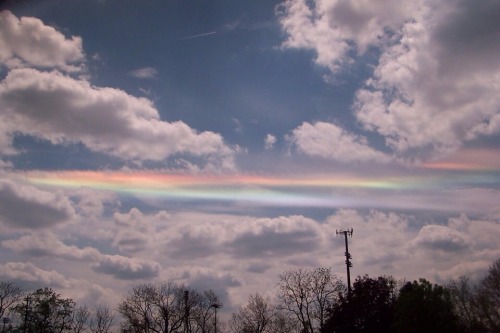Latest Posts by riekod - Page 5



Often times you look at really pretty images of Supernova remnants (what is left after a supernova explosion) and are blown away by their magnificence. But the sad truth is that there are not a lot of these supernovas that we can observe in such great detail.
On the bright side, in general there are lots of supernovas to observe in the universe. And the above is a spectacular time-lapse of the Supernova SN 2015F illustrating how the Luminosity of a Supernova varies with time.
More:
Star snapped before and after nova explosion-BBC
Supernovas and Supernova remnants - Images
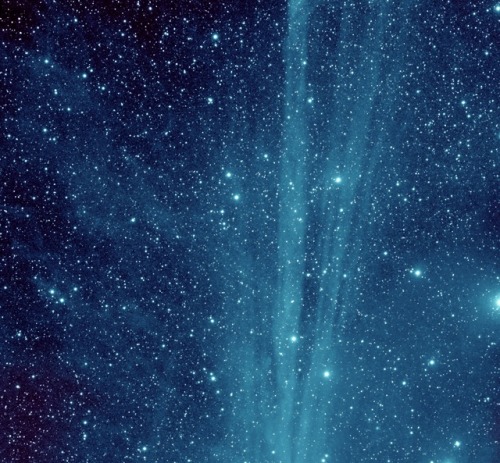
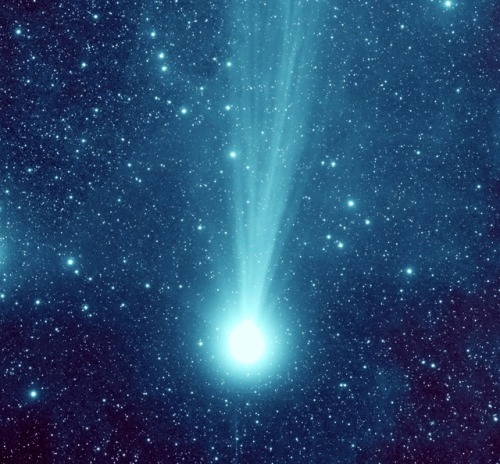
Comet C/2014 Q2 Lovejoy
by Joseph Brimacombe
Two Steps Forward in the Search for Life on Mars
We haven’t found aliens but we are a little further along in our search for life on Mars thanks to two recent discoveries from our Curiosity Rover.

We detected organic molecules at the harsh surface of Mars! And what’s important about this is we now have a lot more certainty that there’s organic molecules preserved at the surface of Mars. We didn’t know that before.
One of the discoveries is we found organic molecules just beneath the surface of Mars in 3 billion-year-old sedimentary rocks.

Second, we’ve found seasonal variations in methane levels in the atmosphere over 3 Mars years (nearly 6 Earth years). These two discoveries increase the chances that the record of habitability and potential life has been preserved on the Red Planet despite extremely harsh conditions on the surface.

Both discoveries were made by our chem lab that rides aboard the Curiosity rover on Mars.

Here’s an image from when we installed the SAM lab on the rover. SAM stands for “Sample Analysis at Mars” and SAM did two things on Mars for this discovery.
One - it tested Martian rocks. After the arm selects a sample of pulverized rock, it heats up that sample and sends that gas into the chamber, where the electron stream breaks up the chemicals so they can be analyzed.
What SAM found are fragments of large organic molecules preserved in ancient rocks which we think come from the bottom of an ancient Martian lake. These organic molecules are made up of carbon and hydrogen, and can include other elements like nitrogen and oxygen. That’s a possible indicator of ancient life…although non-biological processes can make organic molecules, too.
The other action SAM did was ‘sniff’ the air.

When it did that, it detected methane in the air. And for the first time, we saw a repeatable pattern of methane in the Martian atmosphere. The methane peaked in the warm, summer months, and then dropped in the cooler, winter months.

On Earth, 90 percent of methane is produced by biology, so we have to consider the possibility that Martian methane could be produced by life under the surface. But it also could be produced by non-biological sources. Right now, we don’t know, so we need to keep studying the Mars!

One of our upcoming Martian missions is the InSight lander. InSight, short for Interior Exploration using Seismic Investigations, Geodesy and Heat Transport, is a Mars lander designed to give the Red Planet its first thorough checkup since it formed 4.5 billion years ago. It is the first outer space robotic explorer to study in-depth the “inner space” of Mars: its crust, mantle, and core.
Finding methane in the atmosphere and ancient carbon preserved on the surface gives scientists confidence that our Mars 2020 rover and ESA’s (European Space Agency’s) ExoMars rover will find even more organics, both on the surface and in the shallow subsurface.
Read the full release on today’s announcement HERE.
Make sure to follow us on Tumblr for your regular dose of space: http://nasa.tumblr.com.

Chemistry: Burning up alcohol
Source


Chemistry/Physics: Even more smoke tricks
Source

If you dropped a water balloon on a bed of nails, you’d expect it to burst spectacularly. And you’d be right – some of the time. Under the right conditions, though, you’d see what a high-speed camera caught in the animation above: a pancake-shaped bounce with nary a leak. Physically, this is a scaled-up version of what happens to a water droplet when it hits a superhydrophobic surface.
Water repellent superhydrophobic surfaces are covered in microscale roughness, much like a bed of tiny nails. When the balloon (or droplet) hits, it deforms into the gaps between posts. In the case of the water balloon, its rubbery exterior pulls back against that deformation. (For the droplet, the same effect is provided by surface tension.) That tension pulls the deformed parts of the balloon back up, causing the whole balloon to rebound off the nails in a pancake-like shape. For more, check out this video on the student balloon project or the original water droplet research. (Image credits: T. Hecksher et al., Y. Liu et al.; via The New York Times; submitted by Justin B.)

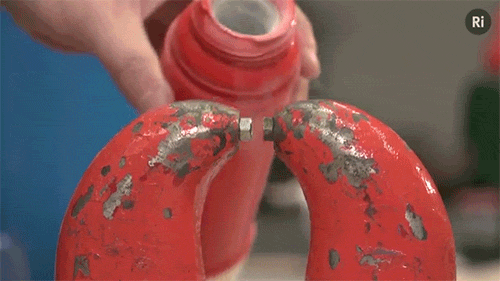

Liquid oxygen is magnetic
Liquid oxygen sticks between the poles of a strong magnet until it boils away into its gas state. This is because it has unpaired electrons, which make each oxygen molecule a tiny magnet with a dipole. Normally, when oxygen is in a flask or in the air, these microscopic magnets point in all directions, cancelling out and meaning that there’s no net magnetic field. When it pours over the permanent magnet, the magnetic molecules all slightly align, creating an induced magnetic field, which reacts with the permanent magnet, making the oxygen stick to the poles. This is called paramagnetism. Click here to watch the video.




Physics: Coins in dry ice
Source: Mr. Hacker on YT
“The most powerful determinant of whether a woman goes on in science might be whether anyone encourages her to go on. My freshman year at Yale, I earned a 32 on my first physics midterm. My parents urged me to switch majors. All they wanted was that I be able to earn a living until I married a man who could support me, and physics seemed unlikely to accomplish either goal. I trudged up Science Hill to ask my professor, Michael Zeller, to sign my withdrawal slip. I took the elevator to Professor Zeller’s floor, then navigated corridors lined with photos of the all-male faculty and notices for lectures whose titles struck me as incomprehensible. I knocked at my professor’s door and managed to stammer that I had gotten a 32 on the midterm and needed him to sign my drop slip. “Why?” he asked. He received D’s in two of his physics courses. Not on the midterms — in the courses. The story sounded like something a nice professor would invent to make his least talented student feel less dumb. In his case, the D’s clearly were aberrations. In my case, the 32 signified that I wasn’t any good at physics. “Just swim in your own lane,” he said. Seeing my confusion, he told me that he had been on the swimming team at Stanford. His stroke was as good as anyone’s. But he kept coming in second. “Zeller,” the coach said, “your problem is you keep looking around to see how the other guys are doing. Keep your eyes on your own lane, swim your fastest and you’ll win.” I gathered this meant he wouldn’t be signing my drop slip. “You can do it,” he said. “Stick it out.” I stayed in the course. Week after week, I struggled to do my problem sets, until they no longer seemed impenetrable. The deeper I now tunnel into my four-inch-thick freshman physics textbook, the more equations I find festooned with comet-like exclamation points and theorems whose beauty I noted with exploding novas of hot-pink asterisks. The markings in the book return me to a time when, sitting in my cramped dorm room, I suddenly grasped some principle that governs the way objects interact, whether here on earth or light years distant, and I marveled that such vastness and complexity could be reducible to the equation I had highlighted in my book. Could anything have been more thrilling than comprehending an entirely new way of seeing, a reality more real than the real itself? I earned a B in the course; the next semester I got an A. By the start of my senior year, I was at the top of my class, with the most experience conducting research. But not a single professor asked me if I was going on to graduate school. When I mentioned shyly to Professor Zeller that my dream was to apply to Princeton and become a theoretician, he shook his head and said that if you went to Princeton, you had better put your ego in your back pocket, because those guys were so brilliant and competitive that you would get that ego crushed, which made me feel as if I weren’t brilliant or competitive enough to apply. Not even the math professor who supervised my senior thesis urged me to go on for a Ph.D. I had spent nine months missing parties, skipping dinners and losing sleep, trying to figure out why waves — of sound, of light, of anything — travel in a spherical shell, like the skin of a balloon, in any odd-dimensional space, but like a solid bowling ball in any space of even dimension. When at last I found the answer, I knocked triumphantly at my adviser’s door. Yet I don’t remember him praising me in any way. I was dying to ask if my ability to solve the problem meant that I was good enough to make it as a theoretical physicist. But I knew that if I needed to ask, I wasn’t.”
— Eileen Pollack (via logicandgrace)
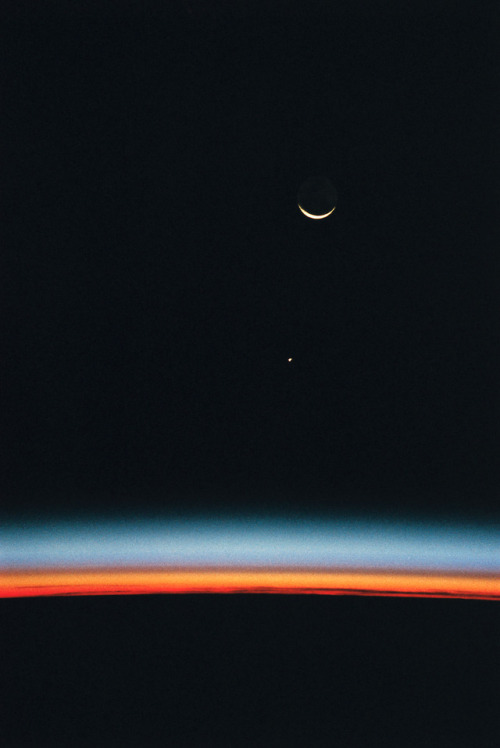
This scene, captured with a 35mm camera from inside the Space Shuttle Endeavour, shows Jupiter rising above the airglow over Earth’s horizon. The crescent Moon is at top frame.
Credit: NASA


This is how far into the earth humans have dug so far.
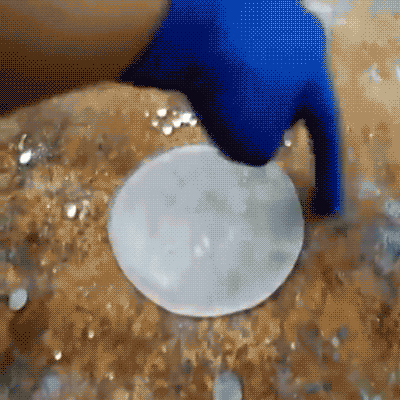
Glass of Supervicious Fluid
Solar System: 10 Things to Know
Movie Night
Summer break is just around the corner. Hang a sheet from the clothesline in the backyard and fire up the projector for a NASA movie night.
1. Mars in a Minute

Back in the day, movies started with a cartoon. Learn the secrets of the Red Planet in these animated 60 second chunks.
2. Crash of the Titans

Watch two galaxies collide billions of years from now in this high-definition visualization.
3. Tour the Moon in 4K

Wait for the dark of the waning Moon next weekend to take in this 4K tour of our constant celestial companion.
4. Seven Years of the Sun

Watch graceful dances in the Sun’s atmosphere in this series of videos created by our 24/7 Sun-sentinel, the Solar Dynamic Observatory (SDO).
5. Light ‘Em Up

Crank up the volume and learn about NASA science for this short video about some of our science missions, featuring a track by Fall Out Boy.
6. Bennu’s Journey

Follow an asteroid from its humble origins to its upcoming encounter with our spacecraft in this stunning visualization.
7. Lunar Landing Practice
Join Apollo mission pilots as they fly—and even crash—during daring practice runs for landing on the Moon.
8. Earthrise

Join the crew of Apollo 8 as they become the first human beings to see the Earth rise over the surface of the Moon.
9. Musical Descent to Titan

Watch a musical, whimsical recreation of the 2005 Huygens probe descent to Titan, Saturn’s giant moon.
10. More Movies

Our Goddard Scientific Visualization Studio provides a steady stream of fresh videos for your summer viewing pleasure. Come back often and enjoy.
Read the full version of this article on the web HERE.
Make sure to follow us on Tumblr for your regular dose of space: http://nasa.tumblr.com.









What Will Happen When Betelgeuse Explodes?
“Every star will someday run out of fuel in its core, bringing an end to its run as natural source of nuclear fusion in the Universe. While stars like our Sun will fuse hydrogen into helium and then – swelling into a red giant – helium into carbon, there are other, more massive stars which can achieve hot enough temperatures to further fuse carbon into even heavier elements. Under those intense conditions, the star will swell into a red supergiant, destined for an eventual supernova after around 100,000 years or so. And the brightest red supergiant in our entire night sky? That’s Betelgeuse, which could go supernova at any time.”
One of the most sobering cosmic truths is that every star in the Universe will someday run out of fuel and die. Once its core fuel is exhausted, all it can do is contract under its own gravitational pull, fusing heavier and heavier elements until it can go no further. Only the most massive stars, capable of continuing to fuse carbon (and even heavier elements) will ever create the Universe’s ultimate cataclysmic event: a Type II, or core collapse, supernova. Stars that are fusing carbon (and up) appear to us today as red supergiants, and the brightest red supergiant as seen from Earth is Betelgeuse. Sometime in the next 100,000 years or so, Betelgeuse will go supernova. When it does, it will emit incredible amounts of radiation, become intrinsically brighter than a billion suns and and be easily visible from Earth during the day. But that’s not all.
What’s the full story on what will happen when Betelgeuse goes supernova? Come get the science today!

The Carina Nebula from the VLT

Coal Sack & Carina Nebulae - Stirling Ranges, Western Australia
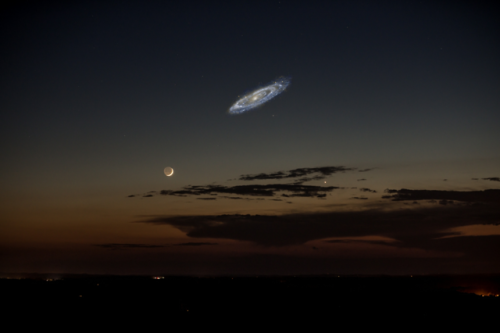
Andromeda’s actual size if it was brighter
via reddit
Also being a scientist pretty much gives you a free pass to be as eccentric as you want like you’ll be at a conference and it’s like “is that guy wearing socks and sandals and plaid pants???” “Ya but he was on the team that discovered gravitational waves let him be”

drugpills
Two Weeks in the Life of a Sunspot
On July 5, 2017, NASA’s Solar Dynamics Observatory watched AR26665, an active region – an area of intense and complex magnetic fields – rotate into view on the sun. The satellite continued to track the region as it grew and eventually rotated across the sun and out of view on July 17.
Full story
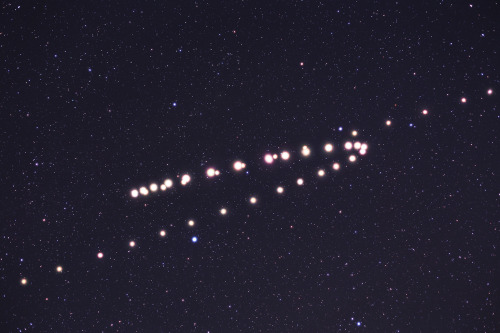
Retrograde motion of Mars in the night sky of the Earth.
Image Credit: Tunc Tezel

The triple point of water
Dust, stars, and cosmic rays swirling around Comet 67P/Churyumov–Gerasimenko, captured by the Rosetta probe. (Source)

Orion in Gas, Dust, and Stars
js

Omega Centauri.
Credit: Maicon Germiniani






The Magellanic Clouds are two irregular dwarf galaxies visible in the Southern Celestial Hemisphere; they are members of the Local Group and are orbiting the Milky Way galaxy. Because they both show signs of a bar structure, they are often reclassified as Magellanic spiral galaxies. The two galaxies are:
Large Magellanic Cloud (LMC), approximately 160,000 light-years away.
Small Magellanic Cloud (SMC), approximately 200,000 light years away.
source
Image credit: Primoz Cigler, Joseph Brimacombe, Ed Dunens and EkantTakePhotos
